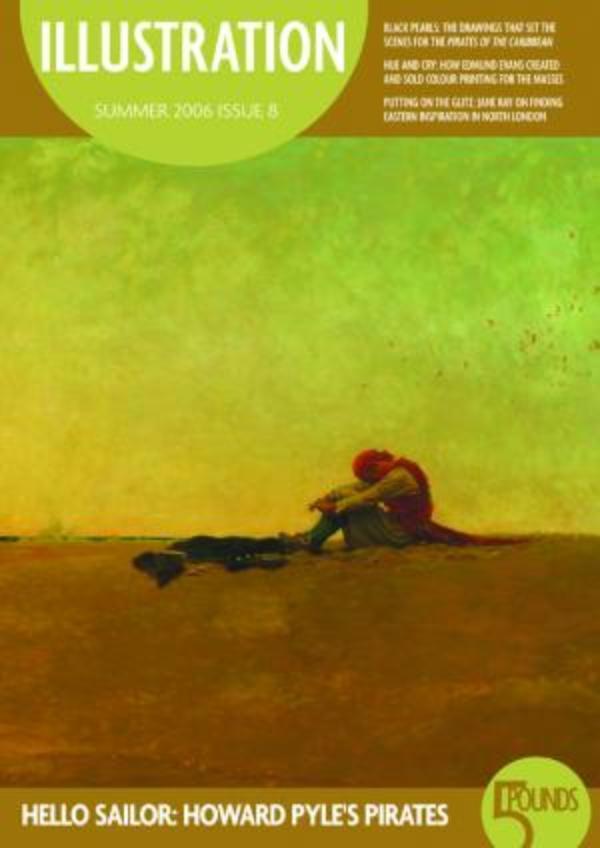
Illustration - Summer 2006 - Issue 8
Just when you thought it was safe to go back in the water, Disney brings out the second Pirates of the Caribbean film. The success of the first film was partly thanks to a good script, excellent special effects and the inspired casting of Johnny Depp as a Keith-Richards-style pirate captain in search of his ship. Beyond this, however, it proved that the romance of the pirate has not faded with time – and the person we have to thank for creating the image of the romantic buccaneer, complete with flared coat, trailing sashes and lethal cutlass, is Howard Pyle (page 10). Even more importantly, he taught many of America’s greatest 20th-century illustrators and so influenced generations of artists. One artist who readily acknowledges his debt to Pyle, is Darrell Warner, who has worked as an illustrator on all the Pirates films. His drawings have set the scene and helped to establish the finer details of costumes and character, from the silhouette of a cloak to the texture of a waistcoat (page 18).
Pyle’s pirates have iconic status, yet they made up only a small percentage of the artist’s output. His books ignited the imaginations of a generation of children with tales of heroes, anti-heroes and swashbucklers of every description. These kind of fantasy and adventure stories lend themselves to illustration more than any other genre. In the 19th-century Edmund Evans was responsible for putting the dreams of mass-market readers into glorious colours (page 24). In doing this he enabled Walter Crane, Kate Greenaway and Randolph Caldecott to attain an enduring place in the history of publishing. Today many illustrators aspire to such classic status. Jane Ray’s glowing colours, intense decoration and work on traditional tales make her a strong contender (page 32). So, if you’re not heading for the south seas this summer, just pull up a deckchair and let the illustrations transport you to wherever you’d rather be.

